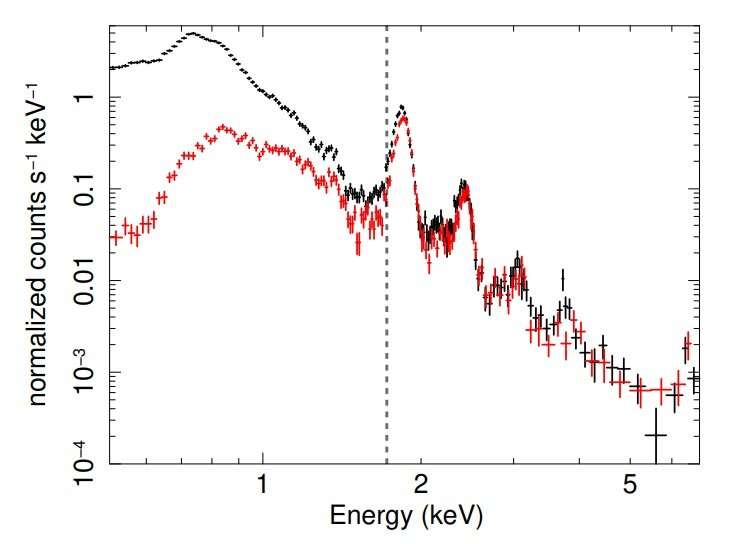October 17, 2022 report
Supernova remnant SNR 0509-67.5 investigated with Chandra

Using NASA's Chandra X-ray observatory, astronomers have carried out an X-ray proper motion study of a supernova remnant known as SNR 0509-67.5. Results of the research, published October 5 on arXiv.org, yield essential information regarding the expansion of this structure.
Supernova remnants (SNRs) are diffuse, expanding structures resulting from a supernova explosion. They contain ejected material expanding from the explosion and other interstellar material that has been swept up by the passage of the shockwave from the exploded star.
Studies of supernova remnants are important for astronomers, as they play a key role in the evolution of galaxies, dispersing the heavy elements made in the supernova explosion and providing the energy needed for heating up the interstellar medium. SNRs are also believed to be responsible for the acceleration of galactic cosmic rays.
SNR 0509-67.5 is a Type Ia supernova remnant in the Large Magellanic Cloud (LMC) discovered as part of an X-ray survey using the Einstein observatory. Previous observations of this SNR have found that it has an age of about 310 years and is expanding into a low density environment with an average velocity of some 7,500 km/s.
A team of astronomers led by Benson T. Guest of the University of Maryland further investigated the expansion process of SNR 0509-67.5. For this purpose, they analyzed the latest proper motion data regarding this SNR collected in 2020 with Chandra.
"A new epoch of Chandra observations (PI: B. Williams) was acquired between April 11 and November 21, 2020 totaling 414 ks and spread over 14 individual segments ranging in length from 25–40 ks," the researchers explained.
First of all, Guest's team measured the diameter of SNR 0509-67.5 using radial profiles along six regions which all cross the geometric center of the remnant and are spaced by rotations of 30 degrees. The new measurements were then compared to previous Chandra data acquired in 2000 and 2007.
The measured change in the diameter of SNR 0509-67.5 in six directions, yielded an average expansion velocity of just over 6,120 km/s. This, according to the researchers, corresponds to an undecelerated age of about 600 years, making the true age of the remnant even lower.
"The average velocity we calculate corresponds to an undecelerated free expansion age of 600 years with the true age somewhat lower. The velocity we measure is consistent with the results of Hovey et al. (2015) who then used hydrodynamic simulations to calculate an age of 310 years," the astronomers concluded.
The researchers added that their method does not allow them to determine whether one area of SNR 0509-67.5 is expanding more quickly than another. Further observations of this remnant are required in order to verify this, using, for instance, the Hubble Space Telescope (HST) in optical bands and Chandra at X-ray wavelengths.
More information: Benson T. Guest et al, An X-ray Proper Motion Study of the LMC SNR 0509-67.5. arXiv:2210.02525v1 [astro-ph.HE], arxiv.org/abs/2210.02525
© 2022 Science X Network




















